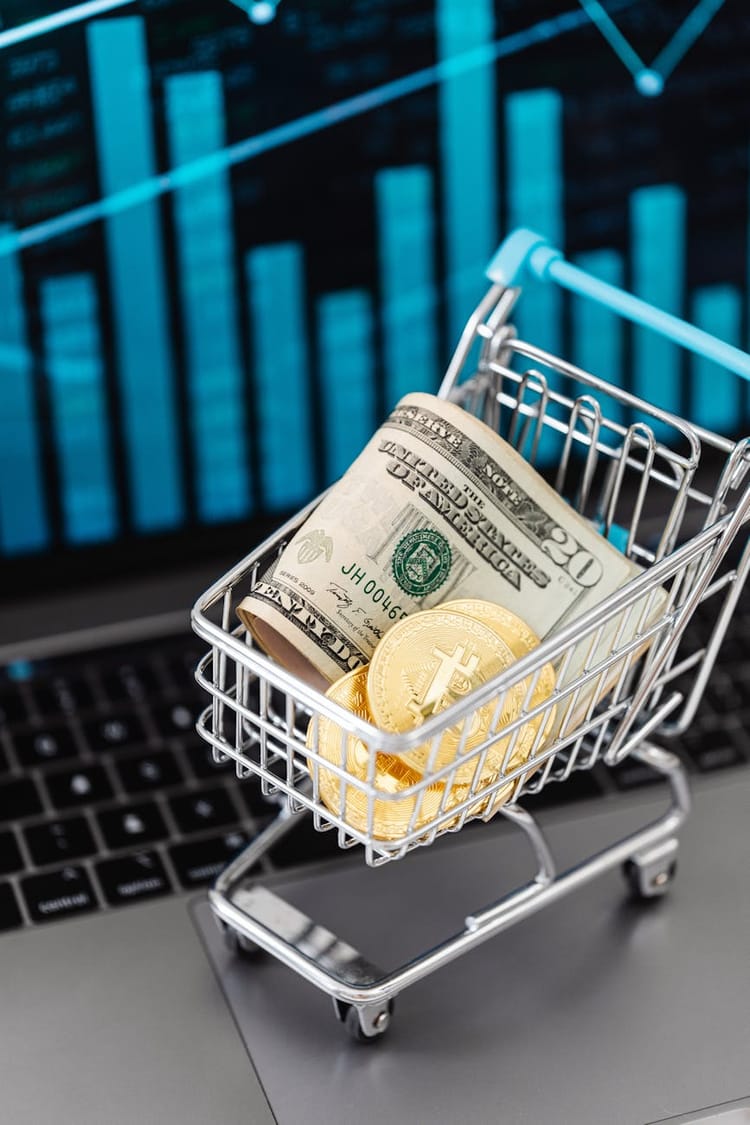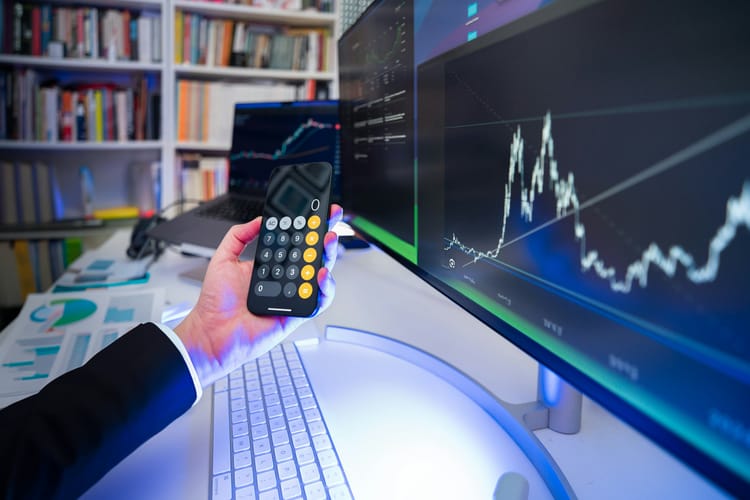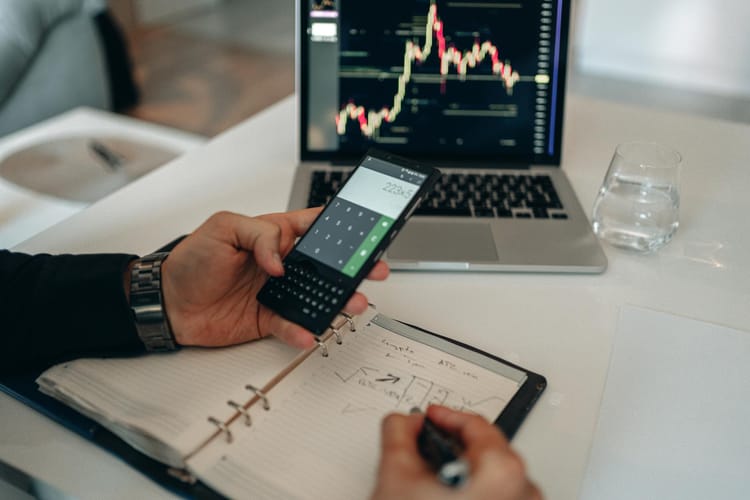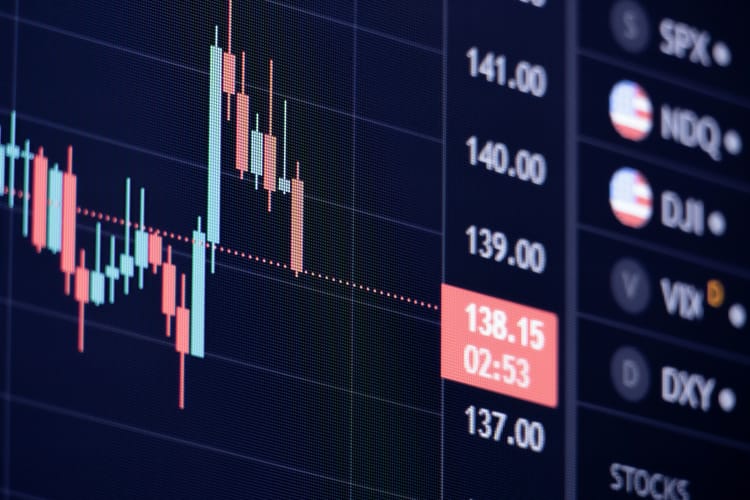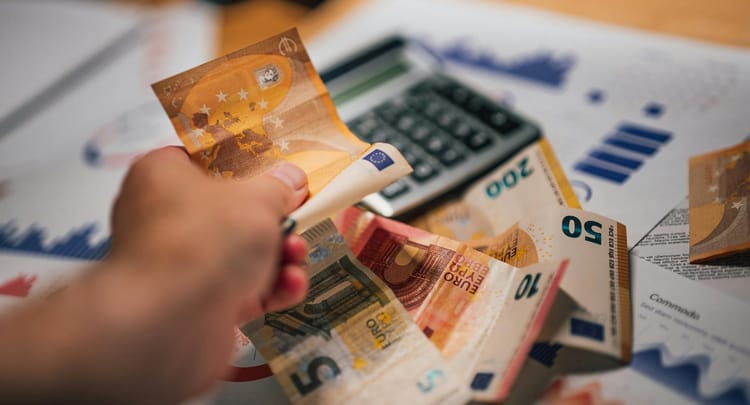Euphoria in trading: What it is and how to overcome it.

For all the traders out there, Warren Buffet once gave great advice,
“The important thing to remember is that you have plenty of time to be right. Just don’t get caught up with the madness of the crowd.”
Imagine, exploiting a market movement, you anticipated beforehand, you have executed a perfectly timed trade.
And now you are watching your position skyrocket in value within minutes,
witnessing profits exceed initial expectations, your mind is now thinking that this trade might give you the financial freedom you have dreamed of.
You are feeling excited, exhilarated, and over the moon!
This overflow of emotions can easily cause an intoxicating wave of
Euphoria!
The feeling of being on top of the world, of having cracked the market code, and of being able to predict the future.
But stop!
Are you really on top of the world?
The thing is,
Euphoria is a powerful emotion that can cloud our judgment. If you are not able to recognize and control it on time, it can lead to disastrous trading decisions.
In the blog below, we’ll explore the dangers of euphoria in trading. We’ll discuss how it can lead to overconfidence, recklessness, and ultimately, losses.
We’ll also provide some tips on how to control emotions and make rational decisions, even when the market is soaring.
What is euphoria in trading?

Euphoria, in trading, refers to an exaggerated state of optimism and excitement, often driven by irrational energy and disregarding of underlying fundamentals. It’s a contagious feeling of certainty about future success, leading to reckless investment decisions and blind faith in rising prices.
Example#1 of Euphoria- SPAC Boom of 2020
Much like what happened in SPAC Boom (2020-2021)?
Special purpose acquisition companies (SPACs) became the hottest trend in 2020 and early 2021. These blank-check companies promised investors access to high-growth companies through mergers, leading to a surge in trading volume and valuations [optional addon]
Euphoria fueled by FOMO (fear of missing out) and promises of quick returns drove SPAC prices to unreasonable levels, often before underlying businesses were even identified!
The SPAC bubble eventually burst in mid-2021, with trading volumes plummeting and many SPACs failing to deliver on their promises. This left many investors with significant losses.
Example#2 of Euphoria- Rise of the NFT

Similarly,
The rise of NFTs, unique digital assets stored on blockchain technology, also sparked excitement in 2021. Artworks, music, and even tweets were sold for millions of dollars, fueled by speculation, collector trends, and a sense of owning a piece of the digital future.
While the NFT market remains vibrant, the initial euphoria has cooled down, with prices stabilizing and trading volume declining. Concerns about market saturation, scams, and environmental impact have also dampened investor enthusiasm.
Example#3 of Euphoria- The Tulip Mania
Besides, the SPAC & NFT cases, we can find similar behavior, related to euphoria, in many points in history, one of the famous examples happened in the country that invented the Stock Market - the Netherlands….The event famously referred as “Tulip Mania”
Introduced in the mid-1500s, tulips, particularly rare varieties with unusual colors and patterns, captured the Dutch imagination. Their exotic nature and limited availability fueled demand, initially among wealthy collectors. As prices started to rise, a speculative frenzy took hold, driven by tulip futures contracts traded on exchanges. People from all walks of life, even those with no prior trading experience, jumped in, hoping for quick riches. At its peak in 1637, a single bulb could fetch the equivalent of a house or several years’ wages. The bubble was fueled by irrational exuberance, fueled by rumors, and fueled by FOMO (fear of missing out). Eventually, doubts crept in, and the bubble burst dramatically. Prices plummeted, leaving many financially ruined.
And of course, euphoria can kick in strong in short-term trading as well. Typically when traders reach their daily target too fast, they will lose some of the profits, and in some cases even return back to the market everything after the next few trades. This is happening because they are sure that after several positive trades when they reach euphoria they are “unstoppable”, the strategy is not relevant anymore since their trading hands are simply golden, and they can’t lose, until reality shows them a different case. Therefore, short-term trades should be prepared mentally for negative trades after every positive trade.
So, what do these examples show?
They show how euphoria can still grip markets and lead to unpredictable price swings.
While some investors may profit from riding the wave, it’s crucial to be cautious and understand the underlying risks before participating in such trends.
The Science of Euphoria: Studies suggest that hormones like dopamine and oxytocin play a role in triggering euphoric experiences. Understanding the neurochemical basis of these states can offer further insights into their potential risks and rewards.
To understand the underlying risks of euphoria, you have to first get a grip on
What are the common triggers of euphoria?
Well, there can be many a trigger, spanning from internal feelings to broader market sentiments, we can broadly categorize them into two major categories,
1. Market-Related Triggers:

Broader Market triggers like
Strong performance of the economy can be a trigger for the emotion to kick in,
Periods of sustained economic growth and rising profits can breed optimism and a belief in continued prosperity, fueling investment and pushing prices higher.
Take, for example, the 1990s Tech Boom,
fueling an unprecedented economic upswing. Investors, blinded by encouraging GDP reports and ever-growing profits, poured money into technology stocks, pushing their prices to unsustainable heights, but once the dot com bubble burst, prices came crashing.
Not only economic growth but also some, favorable government policies, like tax breaks or subsidies, can also boost specific sectors or industries, attracting investors and driving up prices.
Similarly,
Easy access to cheap credit can also encourage borrowing and investment, increasing liquidity and pushing asset prices up.
As it happened in the early 2000s, with cheap credit readily available, it powered a housing market boom. Investors and homeowners piled on debt to buy and flip properties, pushing prices to unsustainable levels.
Also,
Remember the frenzy surrounding blockchain technology in 2017?
Bitcoin and other cryptocurrencies soared on dreams of a decentralized future, capturing headlines and attracting millions. While some early investors struck gold, many were left holding inflated bags when the bubble burst.
This is how breakthroughs in technology or the emergence of new industries can spark excitement and speculation about their potential, leading to inflated valuations for related stocks.
Once you start enjoying a series of successful trades, this initial success can breed confidence and a sense of invincibility, potentially leading to larger position sizes and riskier investment choices. A profitable trade can induce feelings of euphoria, but it can also result in overconfidence and risky decision-making, ultimately clouding judgment and increasing the chances of significant losses.
2. Psychological Triggers:

This is where the story gets more interesting.
You see, Euphoria is not always the result of broader market performance sentiment but Our Internal Psychology plays a very important role in triggering this emotion.
Once you start enjoying a series of successful trades, this initial success can breed confidence and a sense of invincibility, potentially leading to larger position sizes and riskier investment choices.
Enjoy your profitable trades, but don’t let them fuel overconfidence or lead to reckless risk-taking. Controlling emotions is crucial to avoid making impulsive decisions based on temporary success.
This newfound confidence, coupled with positive news or hype surrounding a particular market segment, can create contagious excitement, and market Frenzy. This frenzy amplifies the success you’ve experienced and draws in other investors seeking similar wins.
The frenzy often leads to rapid price increases, generating quick profits for early participants. This reinforces the feeling of success and entices more investors to join the bandwagon, working by the desire for similar gains.
Blinded by the rapid gains and positive sentiment, investors often downplay or dismiss potential risks associated with the market or specific assets.
Seeing others profit and the market excitement escalate, the fear of missing out (FOMO) kicks in. Investors, unwilling to be left behind, join the trend regardless of their own analysis or risk tolerance. This herd mentality pushes prices even higher.
Existing optimistic biases or confirmation bias can further solidify investor conviction in the market’s trajectory. They may selectively seek information that confirms their bullish outlook and disregard bearish indicators or warnings.
The combination of quick profits, herd mentality, and ignoring risks fuels an inflated sense of confidence. Investors overestimate their trading skills and become susceptible to making impulsive or reckless decisions based on emotion rather than logic.
Did you notice the Domino effect in the above chain of events?
It shows, how seemingly isolated factors can lead to a cycle of euphoria. Early success sparks confidence, attracting market frenzy and the promise of quick profits. Investors, blinded by excitement and influenced by herd mentality, disregard risks and rely on personal biases, ultimately resulting in overconfidence and potentially disastrous decisions.
But you have to remember that,
Sustainable success in trading requires a balance of confidence, awareness of risks, and a commitment to thorough analysis, not just chasing quick gains and market excitement.
Treat each trade as a separate event and stick to your predetermined trading plan. During a losing trade, it is essential to maintain a structured risk management plan and a probabilistic mindset to mitigate emotional impact and make disciplined decisions.
How to Avoid the Euphoria in Trading?

Avoiding euphoria in trading requires a proactive approach and constant vigilance. Here are some key strategies to keep your head cool and your portfolio safe:
The First one is to,
Celebrate successes responsibly
Enjoy your profitable trades, but don’t let them fuel overconfidence or lead to reckless risk-taking. Treat each trade as a separate event and stick to your predetermined trading plan.
Also, take regular breaks
Give yourself time to rest and disconnect from the market. Constant monitoring can lead to emotional fatigue and clouded judgment. Stepping away can help you maintain a clear perspective and return to trading with renewed focus.
Don’t Leave the basics,
Develop a Trading Plan and Stick to It
By defining your investment goals, risk tolerance, and trading strategies beforehand, you can avoid letting emotions or market frenzy deviate from your plan.
Flexibility is another key component. Markets are dynamic, and your strategy should be adaptable to changing conditions. Incorporating a lower-sized trade after a significant profit can help maintain modesty, reduce risk, and safeguard capital by promoting a disciplined approach to trading.
Set clear entry and exit points for each trade based on technical analysis and fundamental research, not chasing quick wins.
If you are not a day trader, Always,
Focus on Fundamentals over Hype:
Don’t get swept away by news, rumors, or social media chatter. Analyze company financials, market trends, and economic indicators before making investment decisions.
Understand the intrinsic value of an asset, not just its short-term price fluctuations.
Another valuable thing that professional traders practice, and you can do as well, is to
Question Everything!
Be cautious of overly optimistic forecasts and don’t blindly believe expert opinions. DYOR (Do your own research) and verify the information before trusting it, looking for potential red flags and vulnerabilities even in seemingly “hot” assets.
You can also seek Support and Feedback
Discuss your investment decisions with trusted friends, mentors, or financial professionals. Get different perspectives and challenge your own biases.
By implementing these strategies and remaining vigilant, you can navigate the markets with caution and make informed decisions for long-term success.
Remember, sustainable wealth doesn’t come from chasing quick gains fueled by excitement, but from disciplined investing and careful risk management.
Finally, your trading strategy should include a plan for managing risk.
Spreading your investments across different asset classes and sectors reduces risk and protects you from being overly exposed to any single euphoric bubble. You have to maintain a healthy balance between potentially high-growth assets and stable defensive plays.
This involves not only setting stop-loss orders but also determining the appropriate position sizes for each trade. By keeping your trades within a manageable size, you can avoid the emotional rollercoaster that comes with large, high-stakes positions. In summary, a well-defined trading strategy is your roadmap to successful trading, helping you navigate the financial markets with confidence and control.
Maintaining a Healthy Trading Mindset:

A healthy trading mindset is the cornerstone of long-term success in trading. It’s about being aware of your emotions and biases and taking proactive steps to manage them. Emotional trading can lead to impulsive decisions that deviate from your trading plan, so it’s essential to cultivate discipline and stick to your strategy, even when the market tempts you to act on a whim.
One of the key aspects of a healthy trading mindset is being open to learning and continuous improvement. The financial markets are constantly evolving, and staying ahead requires a commitment to ongoing education. This might involve reading books, attending webinars, or discussing strategies with your trading buddies. By continuously expanding your knowledge, you can refine your trading style and make more informed decisions.
Achieving long-term success in trading is a multifaceted endeavor that requires a combination of a well-defined trading strategy, a healthy trading mindset, and effective risk management. It’s not just about making money in the short term but building a sustainable approach that can weather the ups and downs of the financial markets.
Conclusion:
Euphoria is exciting but tricky in trading. Staying aware of its power is very important. By being mindful of emotions, following set plans, and seeking advice, traders can control its influence.
Recognizing euphoria’s impact aids in making wiser choices and sidestepping quick decisions made because you’re super excited. One of the key aspects of a healthy trading mindset is being open to learning and continuous improvement. Experiencing a successful trade can boost confidence and ambition, but it is crucial to remain cautious to avoid the pitfalls of overconfidence.
Traders aware of this influence maintain a balanced, logical approach, promoting a smoother, more prosperous trading. Understanding how emotions influence decisions arms traders with the power to control risks, developing stability and success in their trading. So,
Trade Smarter !!
But before you go
Here are some
Additional Resources on Trading Psychology and Risk Management:
To help you succeed.
Books:
- “Trading in the Zone” by Mark Douglas: A classic on trading psychology, delving into mental discipline and overcoming emotional biases.
- "The Psychology of Money" by Morgan Housel: An insightful book on developing healthy financial habits and avoiding common psychological pitfalls.
Articles:
- "5 Warning Signs of Market 'Euphoria " by Investopedia: A historical overview of euphoric bubbles and their consequences, offering valuable lessons.
- " 3 Tips for a Diversified Portfolio" by The Motley Fool: Insights on balancing risk and maximizing returns through well-diversified portfolios.
Frequently asked questions:
1. What is euphoria in trading?
Euphoria in trading is an intense emotional state where traders feel extremely confident and optimistic about their trades, often leading to a heightened sense of invincibility.
2. How does euphoria impact trading decisions?
Euphoria can lead to impulsive decisions and overtrading. It may cause traders to ignore risks, follow trends blindly, and make decisions based on emotions rather than rational analysis.
3. What are the signs of euphoria in trading?
Signs of euphoria include overconfidence, excessive risk-taking, disregarding risk management, neglecting fundamental analysis, and chasing quick profits without considering the underlying risks.
4. How can traders avoid falling into the euphoria trap?
Traders can avoid euphoria by staying emotionally aware, sticking to a trading plan, taking breaks during intense market excitement, seeking advice from mentors or trusted individuals, and learning from past mistakes.
5. Why is it crucial to manage euphoria in trading?
Managing euphoria is critical because it helps traders maintain a rational and disciplined approach. Failing to control euphoric impulses often leads to excessive risk-taking, potentially resulting in substantial losses and destabilizing one's trading portfolio.

